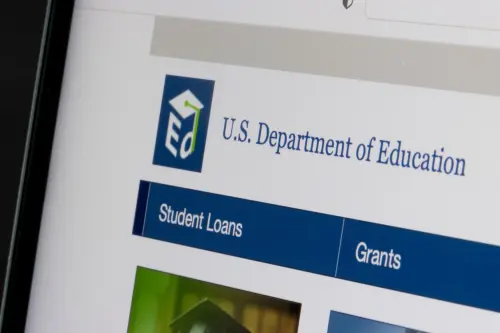Leaving college mid-semester is rarely an easy choice but is typically due to unforeseen circumstances that limit students’ ability to complete their studies. For many students, the timing of that decision can make the difference between a temporary pause in their college progression and a financial roadblock that keeps them from ever returning. When students withdraw mid-semester, the rules governing what happens to their aid are especially opaque. Chief among these is the Return of Title IV Funds (R2T4) policy.
R2T4 calculations determine how much federal aid a student has “earned” at the point of withdrawal. The catch is that college refund policies rarely align with the R2T4 schedule. Many colleges only offer a full refund on tuition and fees if a student withdraws in the first weeks of the semester, but the federal government requires students to maintain enrollment for more than 60% of the academic term to fully earn their aid package. As a result, students often end up having “earned” too little federal aid to cover the charges they still owe their institution.
Using a first-of-its-kind data set from the 2019-20 school year, we investigated the implications of these withdrawal policies. In that year alone, 11 million students received federal financial aid, with hundreds of thousands ultimately withdrawing mid-semester even before the pandemic’s outbreak in the spring of 2020. Many of those withdrawing were subject to R2T4 calculations that could require them to return financial aid.
What is the Return of Title IV Funds (R2T4) policy?
Under the law, students “earn” their federal aid gradually as they progress through a term. Until they reach 60% of the term, aid is prorated to match the share of the semester completed. Once they cross that threshold—even by a single day—they are considered to have earned the full aid package.
Let’s use some simple math as an example: A student is enrolled in a 10-week academic term and offered $5,000 in grants and loans. A student will typically receive their full financial aid package from their college early in the term, using this to pay tuition or other living expenses. Yet behind the scenes, and unbeknownst to many students, they are “earning” this aid based on what percentage of the term they maintain enrollment. After three weeks of a 10-week term, this student has stayed enrolled for 30% of the term, thus “earning” $1,500 in aid. At six weeks, they have “earned” $3,000. Yet, at six weeks and one day, the student “earns” the full federal aid package ($5,000).
In any case, the student’s obligation to pay tuition and fees to the college may already have been locked in as colleges typically make students fully responsible for tuition and fees very early in the term. So, if this student withdraws right at six weeks (instead of six weeks and a day), their account is stuck with a $2,000 difference between the full benefit and their earned aid (i.e., $5,000 to $3,000).
This difference must be returned as “unearned aid” to the federal government. In practice, colleges are responsible for running the R2T4 calculation, determining how much aid the student has earned, and then returning any “unearned” funds to the U.S. Department of Education on the student’s behalf. Because most colleges do not provide any refund for withdrawals at this point, the school will then bill the student directly for the outstanding difference on their account.
Typically, students who completely withdraw end up owing money to their college, not to the federal government. The college considers the student delinquent for any unpaid balances on their account. If and when the student tries to re-enroll, this delinquent debt to the institution can come as a surprise. (A longer description of R2T4 is described in this report.)
To reiterate, it is only after a student has been enrolled past the 60% mark of a term that they are credited with the full aid balance and have no obligation to return any federal aid. This sharp discontinuity in aid eligibility is key in helping us identify the effects of these R2T4 calculations on students’ college decisions down the line.
Impacts on students’ future college enrollment
To understand how these surprising debts may impact students’ future enrollment patterns, our study analyzes a unique dataset from the U.S. Department of Education that tracks students who withdrew in the 2019-2020 academic year, prior to the onset of the COVID-19 shutdowns. In that year, a quarter of U.S. higher ed institutions began using a TurboTax-like tool to complete R2T4 calculations, which provided the first-of-its-kind dataset with precise withdrawal timing information.
These data allowed us to identify the exact percentage of the term completed for hundreds of thousands of students across the country. We find no clear patterns for when students withdraw as this occurs fairly evenly through the term; we also find that our sample of students close to the 60% threshold looks identical to students who withdraw earlier or later in the term on any measure we can observe. We then compare students who withdrew just before or at 60% of a term to those who withdrew just after 60%. The somewhat arbitrary 60% federal threshold provides a natural experiment where students, who are in all observable ways identical, face distinct challenges due to when they withdrew during the academic term. In practice, students who withdrew just prior to the 60% threshold were obligated to return, on average, $1,600 of unearned federal aid, while those who withdrew just after that threshold faced no repayment obligations under R2T4.
This small difference in timing produced very different outcomes between these two groups:
- Students who withdraw just before the 60% mark are 2.6 percentage points (5%) less likely to re-enroll in college within the next three years.
- The enrollment impacts are driven by students from lower-income families, whose long-term enrollment persistently declines between 5 to 6 percentage points (11%), suggesting a large enrollment response relative to the actual amount of aid owed.
Students subject to R2T4 are less likely to receive Title IV aid in the future, but this is mechanically due to fewer students enrolling after being subject to the policy. Students who do ultimately re-enroll continue to access federal aid. We found no evidence that students transferred to other institutions instead; rather, we conclude that many simply stopped out.
For some, the unpaid R2T4 balance also triggers additional burdens on students. Colleges sometimes refuse to release transcripts when students have unpaid balances. This practice, known as transcript withholding, can create problems beyond re-enrollment. Without access to their academic record, students may not only be unable to transfer or re-enroll but may also not be able to show proof of coursework to an employer.
Policy solutions
In the 1998 amendments to the Higher Education Act, Congress created the current R2T4 policy, aiming to balance two goals: safeguarding public dollars and expanding access to higher education. The concern is that individuals might enroll in college to collect federal aid but not show up to class.
The 60% threshold is an acknowledgement that Congress does not wish to punish students who face unexpected hardships. ED has tweaked the regulations over time in an attempt to soften the impact on students, but the result has been increasingly complex rules that continue to be in flux. Colleges often struggle with compliance, and R2T4 calculation errors regularly appear in the top 10 concerns in federal audits, though these are found to be calculation errors with little evidence of fraud.
Yet, our results show the rigid structure of the R2T4 policies can derail students’ futures over seemingly trivial differences in enrollment timing. With evidence that the policy reduces re-enrollment—especially for low-income students—policymakers and institutions should reconsider whether R2T4 is achieving its intended purpose or simply deterring students who’ve fallen on hard times from completing a college degree.
Below we collate some ideas that have been proposed to improve on the current policy, including some ideas based on our findings. Some policies require Congress to act to change federal statutes while other policies can be spearheaded by states and colleges.
- Simplify or eliminate rules: A 2015 report from the National Association of Student Financial Aid Administrators suggested that the rules should be simplified or removed completely. They argue that Title IV aid has several protections already in place, such as Satisfactory Academic Progress and lifetime eligibility caps, which reduce fraud and abuse, thus rendering the R2T4 process unnecessary.
- Alternative approaches to “earning” aid: Accelerating how aid is earned could allow students to earn the full amount of financial aid sooner. Students who withdraw at 60% of a term are unlikely to have signed up for financial aid fraudulently, and the same argument can be made for students who withdraw slightly earlier than this point. When Congress revisits the statute, they could revise the threshold or institute accelerated aid earning so that students earn more than one percent of their aid for each percentage of the term completed.
- Align refund and aid schedules: Absent wholesale changes to the Higher Education Act, colleges can adjust their refund policies to better align with the realities of federal aid policy. For example, San Diego State University has a refund policy that relies on a prorated tuition and fee schedule, thus ensuring that students who withdraw completely do not end up owing SDSU any back-pay tuition. Such alternate models, where payments more closely mirror the R2T4 schedule, could reduce surprise billing and the negative impacts associated with them. Based on how the refund policy works, we would predict this policy could be the best for withdrawing students as the refunded tuition dollars reduce long-term loan balances and avoid surprise institutional charges.
- Provide targeted debt relief: Our findings suggest that R2T4 and subsequent surprise debt disproportionately affects students from the lowest-income families. It follows that institutions or the federal government could design refund policies that depend on the student’s Student Aid Index (or a similar measure of socioeconomic need) to minimize these adverse effects. Alternatively, states can follow Ohio, which has piloted a complementary strategy in which some public institutions forgive institutional debt in exchange for re-enrollment.
- Restrict transcript withholding: Policy can also target the consequences of R2T4 without altering the statute itself. In recent years, ED and several states have restricted when colleges may withhold transcripts for unpaid balances. Several states, such as California and Ohio, have enacted measures to limit or ban transcript withholding.
There are a number of different reasons students completely withdraw mid-term, including financial hardship, family/personal issues, and health problems (especially mental health). About a third of students enrolled in a postsecondary program considered withdrawing from their program in the past year, and when those decisions happen mid-semester, our analysis finds the financial consequences can stop students from ever returning to complete their credential.
Reforms to R2T4 policies could make the financial aid system more forgiving and more responsive, ensuring that students’ short-term setbacks do not become long-term roadblocks.
The Brookings Institution is committed to quality, independence, and impact.
We are supported by a diverse array of funders. In line with our values and policies, each Brookings publication represents the sole views of its author(s).










